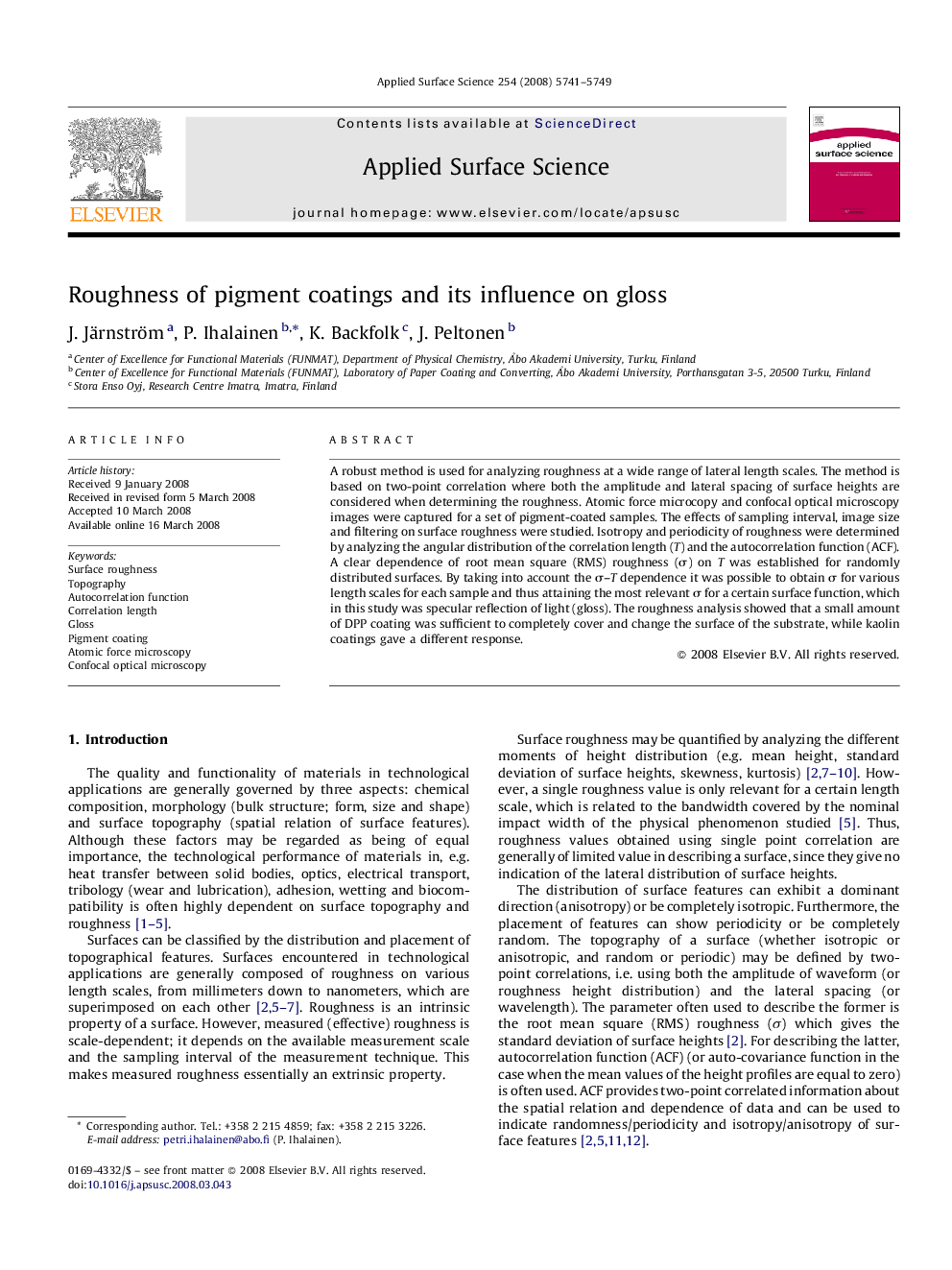| Article ID | Journal | Published Year | Pages | File Type |
|---|---|---|---|---|
| 5362369 | Applied Surface Science | 2008 | 9 Pages |
A robust method is used for analyzing roughness at a wide range of lateral length scales. The method is based on two-point correlation where both the amplitude and lateral spacing of surface heights are considered when determining the roughness. Atomic force microcopy and confocal optical microscopy images were captured for a set of pigment-coated samples. The effects of sampling interval, image size and filtering on surface roughness were studied. Isotropy and periodicity of roughness were determined by analyzing the angular distribution of the correlation length (T) and the autocorrelation function (ACF). A clear dependence of root mean square (RMS) roughness (Ï) on T was established for randomly distributed surfaces. By taking into account the Ï-T dependence it was possible to obtain Ï for various length scales for each sample and thus attaining the most relevant Ï for a certain surface function, which in this study was specular reflection of light (gloss). The roughness analysis showed that a small amount of DPP coating was sufficient to completely cover and change the surface of the substrate, while kaolin coatings gave a different response.
